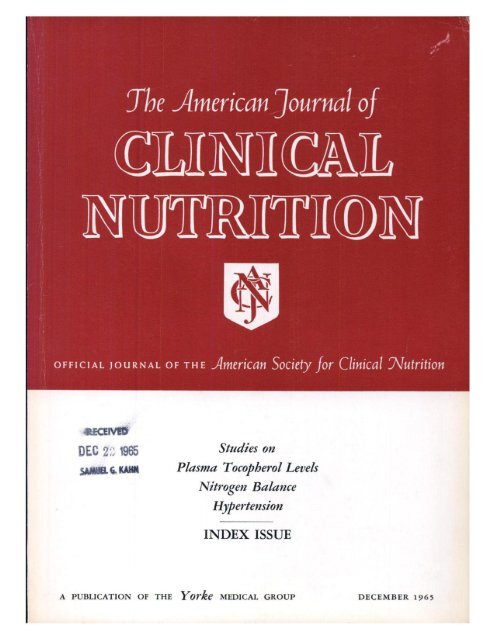一种新的营养评估工具,结合营养评分和GLIM标准对危重病人住院死亡率的预后价值:一项单中心回顾性队列研究
IF 6.5
1区 医学
Q1 NUTRITION & DIETETICS
引用次数: 0
摘要
背景:对于危重患者的营养评估没有金标准工具。修订后的危重病营养风险(mNUTRIC)评分评估未来营养不良的风险,而全球营养不良领导倡议(GLIM)标准仅诊断当前的营养不良。目的:我们旨在评估一种新型营养评估工具的预后性能,该工具结合了ICU患者住院预后的mNUTRIC评分和GLIM标准。方法:对2018年8月1日至2021年6月7日入住ICU的患者进行单中心、回顾性观察队列研究。该新工具被分为四组:第一组:低风险(0-4分),通过mNUTRIC加上GLIM无营养不良;第二组:低风险加中度营养不良或高风险(5-9分)加无营养不良;第三组:高风险加中度营养不良或低风险加严重营养不良;第4组:高风险加上严重营养不良。结果:共纳入724例患者。1-4组的住院死亡率分别为3%、16%、32%和52%。与第1组相比,新型营养评估工具导致的不良营养状况是住院死亡率的独立危险因素,特别是当患者进展到第4组时(OR: 2.32, 95% CI: 1.84, 2.93)。在受试者工作特征(ROC)分析中,与经过验证的严重程度评分系统和其他重要危险因素(如机械通气的使用)相比,该新型工具对院内死亡率的预测效果最强(AUC = 0.759, 95% CI: 0.723, 0.795)。结论:这种新的营养评估工具在与住院死亡率相关方面具有很强的预后价值。有必要使用外部数据集进行前瞻性验证。对ICU入院时的营养现状和未来风险进行全面的营养评估可能是评估危重患者预后的最关键因素。本文章由计算机程序翻译,如有差异,请以英文原文为准。
A novel nutritional assessment tool combining the mNUTRIC Score and the GLIM criteria with prognostic value for in-hospital mortality in critically ill patients: a single-center retrospective cohort study
Background
There is no gold standard tool for nutritional assessment in critically ill patients. The modified Nutrition Risk in Critically Ill (mNUTRIC) score assesses risk of future malnutrition, whereas the Global Leadership Initiative on Malnutrition (GLIM) criteria diagnose only current malnutrition.
Objectives
We aimed to evaluate the prognostic performance of a novel nutritional assessment tool that combines the mNUTRIC score and GLIM criteria for hospital outcomes among intensive care unit (ICU) patients.
Methods
A single-center, retrospective observational cohort study was conducted on patients admitted to the ICU between 1 August, 2018, and 7 June, 2021. The novel tool was categorized into 4 groups: group 1: low risk (0–4 points) by mNUTRIC plus no malnutrition from the GLIM; group 2: low risk plus moderate malnutrition or high risk (5–9 points) plus no malnutrition; group 3: high risk plus moderate malnutrition or low risk plus severe malnutrition; and group 4: high risk plus severe malnutrition.
Results
A total of 724 patients were enrolled. The in-hospital mortality rates for groups 1–4 were 3%, 16%, 32%, and 52%, respectively. A poor nutritional status by the novel nutritional assessment tool was an independent risk factor for in-hospital mortality when compared with group 1, particularly as patients progressed to group 4 (odds ratio: 2.32; 95% confidence interval: 1.84, 2.93). In the receiver operating characteristic (ROC) analysis, the novel tool demonstrated the strongest prognostic performance for in-hospital mortality (area under the ROC curve: 0.759; 95% CI: 0.723, 0.795) compared with validated severity scoring systems and other significant risk factors such as use of mechanical ventilation.
Conclusions
This novel nutritional assessment tool has strong prognostic value in being associated with in-hospital mortality. Prospective validation with an external dataset is warranted. A comprehensive nutritional assessment of the current status and future risk at ICU admission could be the most critical factor in assessing the prognosis of critically ill patients
求助全文
通过发布文献求助,成功后即可免费获取论文全文。
去求助
来源期刊
CiteScore
12.40
自引率
4.20%
发文量
332
审稿时长
38 days
期刊介绍:
American Journal of Clinical Nutrition is recognized as the most highly rated peer-reviewed, primary research journal in nutrition and dietetics.It focuses on publishing the latest research on various topics in nutrition, including but not limited to obesity, vitamins and minerals, nutrition and disease, and energy metabolism.
Purpose:
The purpose of AJCN is to:
Publish original research studies relevant to human and clinical nutrition.
Consider well-controlled clinical studies describing scientific mechanisms, efficacy, and safety of dietary interventions in the context of disease prevention or health benefits.
Encourage public health and epidemiologic studies relevant to human nutrition.
Promote innovative investigations of nutritional questions employing epigenetic, genomic, proteomic, and metabolomic approaches.
Include solicited editorials, book reviews, solicited or unsolicited review articles, invited controversy position papers, and letters to the Editor related to prior AJCN articles.
Peer Review Process:
All submitted material with scientific content undergoes peer review by the Editors or their designees before acceptance for publication.

 求助内容:
求助内容: 应助结果提醒方式:
应助结果提醒方式:


